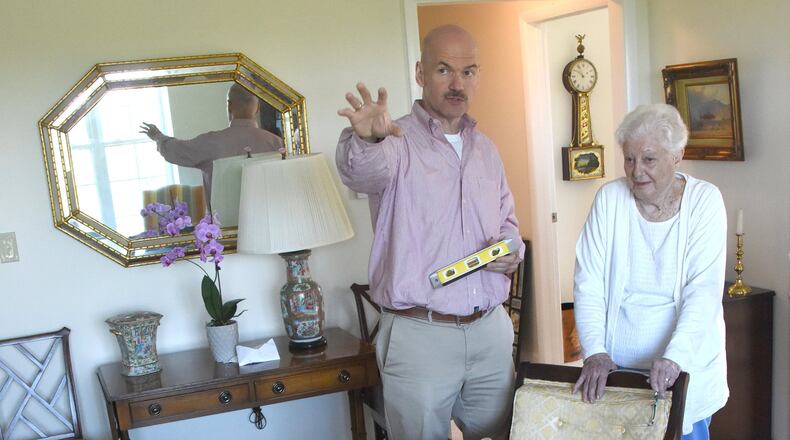Two weeks later, Price’s apartment looked and felt like home. “I had no idea what to bring, but Paul sat down and we looked around and said ‘yes’ or ‘no’,” Price said.
Like Price, downsizing for many retirees can be a tough emotional process.
“Often, they have lived in a house for a long time and its hard for them to downsize,” Regan said. “They have a lot of small things that end up accumulating to be too much.”
To decide what to bring to a new home, Regan suggests individuals look at the floor plan and try to create a comfortable space where they can be surrounded by their favorite things in a room that reflects their previous abode.
“People tend to bring too much stuff, or not enough, so my goal is listening to you and then fitting it to how you want it and letting the process evolve from there,” Regan said.
Before starting the process, Regan recommends taking pictures and documenting what is in each room. This way, the room can be recreated in the resident’s new location. Also, making lists helps illuminate how much they have while identifying the duplicates.
Price originally had two yellow couches in her townhouse’s living room. She brought only one to her new home and donated the other. “My new living room is very similar to my old one,” Price said smiling as she glanced around the yellow, oriental-themed room.
Organizing a house full of memories can be daunting. But, one can start by clearing out small places that contain little sentimental value like a medicine closet. This will create instant gratification and the motivation to continue to move on to other rooms.
Another trick is labeling bins as either “trash,” “sell” or “donate.” This brings rationality to the emotional process. A good rule of thumb is the “six-month test.” If an item has not been touched in the past six months, it can go into one of the bins. It is also a good idea to hire a trusted appraiser to determine items’ values.
Family pictures and albums should be tackled last because they are the hardest to go through, but also the easiest to give to a third party to handle. Pictures, children’s artwork and letters can be digitized and transferred to a variety of media while still keeping the memories of the past intact. Some Pittsburgh downsizing and moving companies, such as Discover Organizing, have professional photograph organizers who can create scrapbooks and legacy videos to preserve the sentimentality of the condensed images.
Storage units tend to be a go-to for items that seniors are not sure about keeping. Regan advises that it’s best to either use a storage unit for a short time and fill it with items that are needed or avoid using a storage unit at all. “People tend to kick the can down the road so clearing out a storage unit can become a dreaded thing and add up to be a lot of money,” Regan said.
Professional organizers, especially those who are members of the National Association of Senior Move Management, are recommended for alleviating the stress and unnecessary extended periods of time in the organizing and downsizing process. “Safety is my No. 1 priority, then it is making the room aesthetically pleasing,” said Regan, a member of the national association.
When Price’s apartment was nearly complete, she walked through the rooms, looking around to see what else from her home she could bring to her new apartment.
“Every inch counts — the rooms are evolving to become more and more like home,” she said.
About the Author
